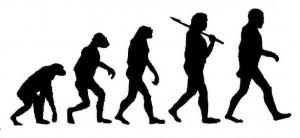The Product Pitch:
This was the most used form of selling used in the past. Manipulative selling emerged in the 1940s, and it’s the kind of sales process that gives salespeople a slimy reputation. Instead of relying on the strength of their products, shrewd salespeople would use manipulative psychological techniques to lead unsuspecting prospects to a sale. For example, a salesperson would use specially designed questions that always ended in a “yes” from the prospect. The result? A lot of customers who ended up with products they didn’t really need!
The Hard Sell:
Hard sell refers to an advertising or sales approach that features especially direct and insistent language. A hard sell is designed to get a consumer to purchase a good or service in the short-term, rather than evaluate his or her options and potentially decide to wait on the purchase. It is considered a high-pressure, aggressive technique that has fallen out of favour according to some sales experts.
Relationship-Building Selling
Relationship selling refers to the sales technique that focuses on the interaction between the buyer and the salesperson rather than the price or details of the product. Arguably, all three remain critical for any sales activity, but the status of the relationship can increase consumer loyalty as a result of familiarity and personality of the salesperson.
This sales technique is prominent for companies selling products and services that rely on repeat business from customers, such as insurance policies, or private instructors, such as dance or music. These individuals are forced to compete on the level of quality and price; however, it they make good relationships, their customers will continue to buy from them as a result, sometimes regardless of price.
The Salesperson as a Consultant
A newer sales process model has been gaining in popularity over the past few years: the consultative sales model. In this model, the salesperson acts as an expert of their product, allowing them to frame the product as the solution to the prospect’s problem. The “consultant” draws on the company’s well of data and case studies to demonstrate how the product can increase the prospect’s bottom line or save on operating costs. The salesperson uses “consultative” language—not manipulative language—to establish authority and cement their standing as a solutions-oriented expert in the eyes of the prospect.
Responding to Increased Customer Sophistication
It’s clear that sales processes need a major overhaul to continue to be effective today and into the future. As technology becomes easier to use, and more powerful, customers will continue to go online to examine companies before a salesperson can even get a foot in the door. Customers today expect tailored solutions, and they expect salespeople to not only be experts in their products, but experts in the businesses they service and their industry as a whole. They’re not shopping on price alone—they’re looking for value, a system that will truly solve their business problems.
A salesperson needs to identify and speak to both perceived and real needs. This way, the salesperson becomes indispensable, and definitely not replaceable by a quick Google search. This kind of approach begins with thoroughly understanding the prospect and becoming a partner with the prospect during the sales process.

